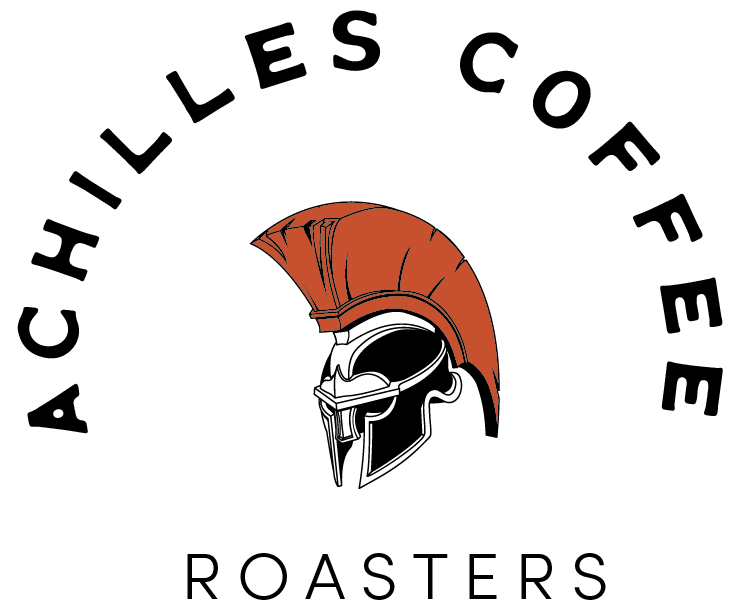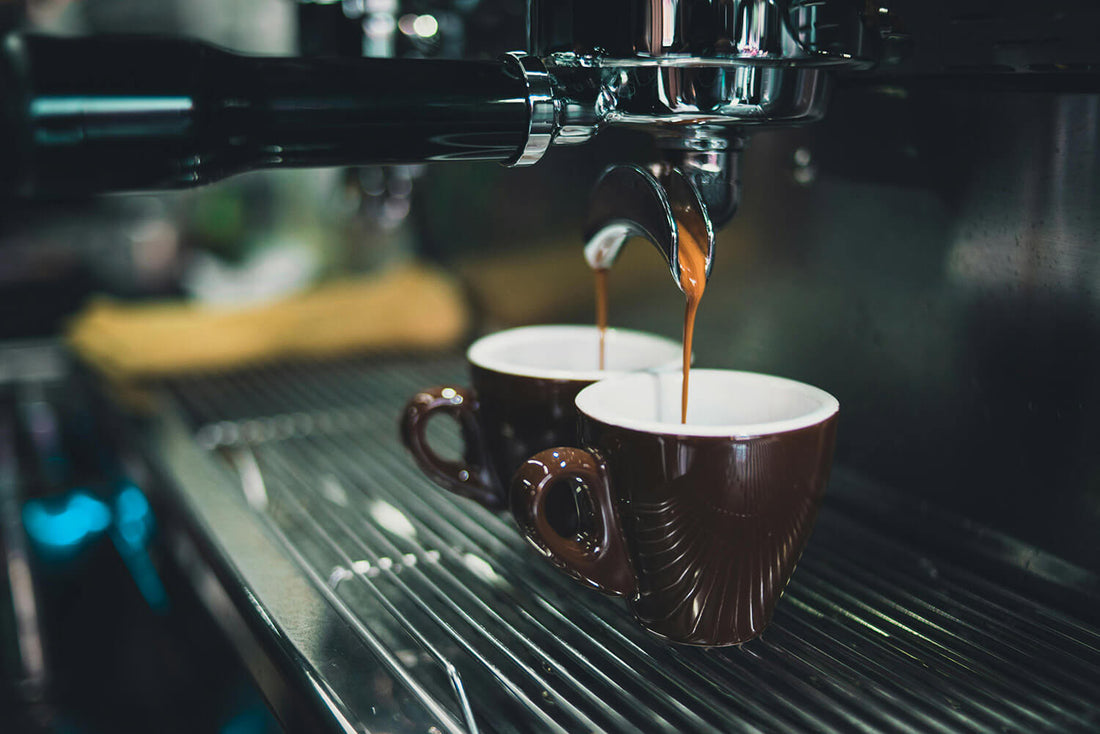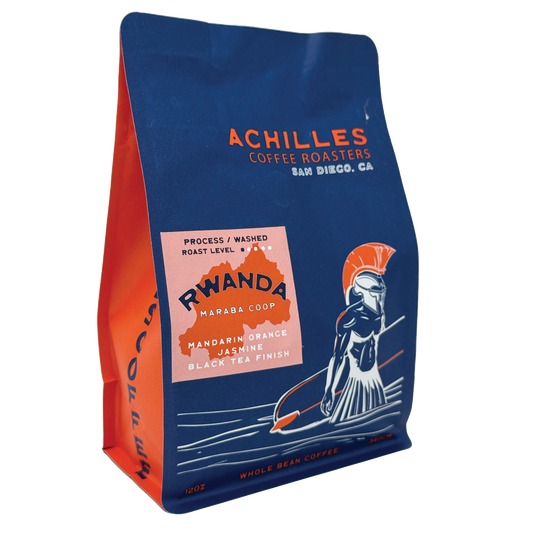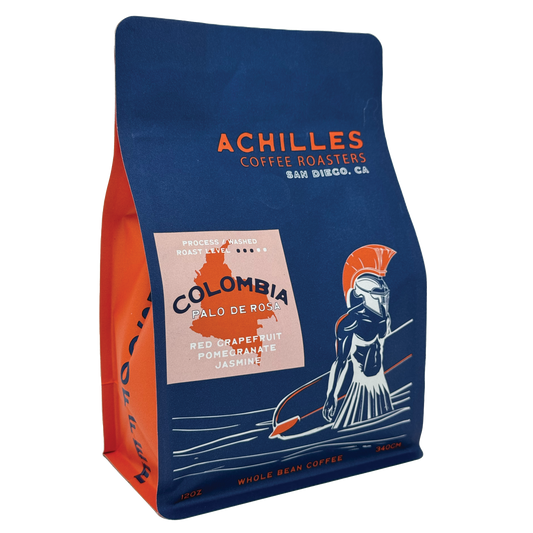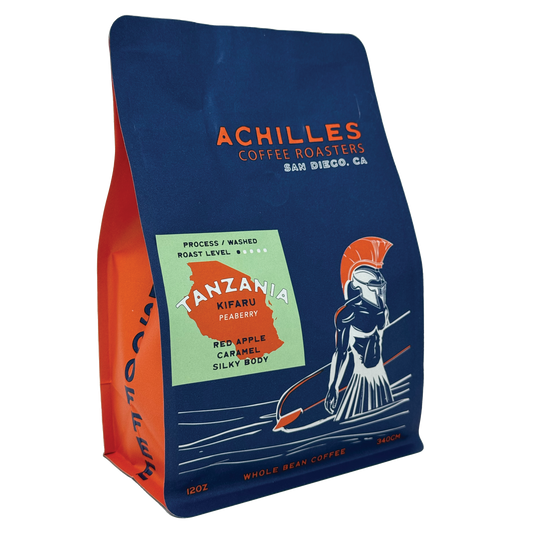When you walk into a coffee shop or browse the shelves of your local grocery store, chances are you’ve seen bags boldly labeled espresso beans. At first glance, this can be confusing. What exactly makes an espresso bean different from any other coffee bean? Is it a unique variety of coffee grown specifically for espresso, or is it just clever marketing designed to catch your eye?
The truth is, there’s a lot of myth and misunderstanding surrounding espresso beans. Some people assume they contain more caffeine. Others believe they’re grown or processed in a completely different way than “regular” coffee beans. In reality, espresso beans are not a separate type of coffee but rather beans chosen, roasted, and marketed with the espresso brewing method in mind.
Understanding what espresso beans actually are—and how they compare to other coffee beans—can help you make better choices whether you’re pulling a shot at home, ordering at your favorite café, or deciding which bag of beans to bring home from the store.
In this guide, we’ll break down the facts about espresso beans: what the label really means, how they compare to regular coffee, why roast level matters, and what’s truly important when it comes to brewing the perfect cup.
What Are Espresso Beans?
Are Espresso Beans Actually Different?
Technically speaking, there’s no separate coffee species or unique type of bean called espresso beans. Espresso beans are simply coffee beans that have been roasted, blended, or packaged with espresso brewing in mind. The term is more about intended use and roast profile than a botanical difference.
Espresso Is a Brewing Method, Not a Bean Type
Espresso isn’t defined by the bean itself but by how the coffee is brewed. The espresso method involves:
-
A very fine grind size to maximize surface area.
-
High water pressure (around 9 bars) to push water through tightly packed grounds.
-
A short brew time (typically 25–30 seconds).
The result is a concentrated, full-bodied shot of coffee with a rich flavor and topped with a layer of crema. This brewing style intensifies the flavors of the beans, so roast choice and bean selection become especially important.
Why Beans Are Labeled “Espresso”
Because espresso extraction is so demanding, roasters often create beans specifically suited to it:
-
Roast level: Medium to dark roasts are commonly labeled as espresso because they produce lower acidity, fuller body, and sweeter, chocolatey notes that balance well under pressure.
-
Blends: Roasters may combine beans from multiple origins to create a more consistent flavor, ensuring the shot tastes balanced with or without milk.
-
Marketing clarity: Labeling beans as espresso helps guide consumers toward coffee that’s well-suited for use in espresso machines, even though those same beans can be brewed by other methods.
In short, espresso beans aren’t fundamentally different—they’re regular coffee beans chosen, roasted, and branded to perform best under the espresso method.
How Espresso Beans Are Typically Roasted
The Role of Roast Level in Espresso
Most coffees labeled as espresso beans are roasted to a medium-dark or dark level, and for good reason. These roast profiles emphasize qualities that shine in espresso extraction:
-
Chocolatey and caramelized flavors – Darker roasts highlight deep sweetness, cocoa notes, and caramel tones created during roasting.
-
Nutty undertones – Almond, hazelnut, and toasted flavors emerge strongly, adding richness.
-
Reduced acidity – Darker roasting smooths out bright acids, preventing sharp or sour flavors from dominating in the concentrated shot.
-
Fuller body and mouthfeel – A heavier, more syrupy body helps espresso taste balanced and satisfying on its own or with milk.
Light Roasts in Espresso
While most traditional espresso uses darker roasts, light roasts aren’t off limits. They tend to:
-
Emphasize acidity and fruit-forward notes like citrus, berries, or tropical fruit.
-
Provide a brighter, more complex flavor experience, though sometimes at the expense of balance.
-
Risk tasting sharp or sour if not dialed in carefully, since acidity is intensified in espresso extraction.
Many specialty coffee enthusiasts enjoy experimenting with light roasts in espresso because they highlight origin characteristics—showing off terroir, varietal, and processing differences in a concentrated form.
Medium Roasts: The Middle Ground
Medium roasts offer a balance between brightness and sweetness, making them highly versatile. In espresso, they:
-
Retain some of the coffee’s origin-driven fruitiness and complexity.
-
Add in developed sweetness and body, preventing overly sharp acidity.
-
Create an approachable espresso that works well both straight and in milk drinks.
Dark Roasts and the “Classic” Espresso
Dark roasts remain the most common choice for espresso worldwide. They:
-
Deliver bold, smoky flavors with low acidity and heavy body.
-
Produce the traditional flavor profile associated with espresso—intense, bittersweet, and robust.
-
Pair exceptionally well with milk, standing up to lattes, cappuccinos, and cortados.
No Rules—Only Preferences
Ultimately, there’s no strict rule about which roast level is “right” for espresso. It comes down to:
-
Taste preference – Bright and fruity? Try light roasts. Smooth and balanced? Medium roasts. Bold and intense? Dark roasts.
-
Brew method flexibility – Any roast can technically be brewed as espresso, though some require more careful dialing in.
-
Experimentation – Trying the same coffee at different roast levels can be an eye-opening way to explore how roasting transforms flavor.
Espresso Blends vs. Single Origin Beans
Espresso Blends vs. Single-Origin: What’s the Difference?
When shopping for espresso, you’ll often notice bags labeled as espresso blends. These blends are carefully crafted by roasters who combine beans from multiple origins to create a balanced, reliable, and versatile flavor profile.
Why Blends Work Well for Espresso
-
Balance of flavors – A bright, fruity bean (such as an Ethiopian) might be paired with a chocolaty, full-bodied bean (like a Brazilian) to create a cup that’s lively yet smooth.
-
Consistency across seasons – Coffee crops change with each harvest. By blending beans, roasters can maintain a stable espresso profile year-round.
-
Versatility in drinks – Blends are often designed to shine as straight espresso shots while also holding up well in milk-based drinks like cappuccinos, lattes, and flat whites.
Blends are the reason many cafés can serve espresso that tastes familiar and reliable every day, regardless of seasonal shifts in coffee availability.
The Appeal of Single-Origin Espresso
Single-origin espresso, on the other hand, comes from a single farm, region, or country. Instead of aiming for balance, these coffees celebrate the unique qualities of a specific terroir.
-
Flavor clarity – Single-origin shots often showcase distinctive notes such as citrus, berry, or floral highlights that reflect their growing region.
-
Complexity – These coffees can offer layered, nuanced flavors that change as the shot cools.
-
Less predictable in milk – Because single-origins aren’t designed for balance, their bold acidity or fruit-forward notes can sometimes clash with milk, though this can also create surprising and enjoyable pairings.
Which Should You Choose?
-
Blends are ideal if you want consistency, balance, and reliability, especially for milk-based drinks.
-
Single-origins are best if you’re curious, adventurous, and want to explore how espresso can showcase unique flavors from different regions.
In short, blends are the safe, versatile option, while single-origin espresso invites you to experiment and discover something new with every cup.
Do Espresso Beans Have More Caffeine?
Do Espresso Beans Really Have More Caffeine?
One of the most persistent myths in the coffee world is that espresso beans contain more caffeine than “regular” coffee beans. In truth, the caffeine content is shaped by roast level, brewing style, and serving size—not by a special type of bean labeled “espresso.”
Roast Level and Caffeine
-
Light roasts actually have slightly more caffeine by volume than dark roasts. This is because lighter roasts retain more of their original density, meaning that when measured by scoop, you’re packing in more mass—and therefore, more caffeine.
-
Dark roasts, commonly chosen for espresso, lose density as the beans expand during roasting. This makes them lighter, so a scoop of dark roast weighs less and contains marginally less caffeine.
Brewing Method and Concentration
Espresso is defined by its brewing process, not by the bean itself. Using fine grounds, high pressure, and a short extraction time, espresso yields a small but concentrated shot of coffee.
-
Ounce for ounce, espresso has much higher caffeine concentration than drip coffee. A single 1–1.5 oz shot contains about 60–75 mg of caffeine.
-
Drip coffee, while less concentrated, is served in much larger volumes (8–12 oz or more). As a result, a standard cup of drip often contains 95–150 mg of caffeine total—more than double a single shot of espresso.
The Real Takeaway
If you drink espresso in traditional servings, you’re actually consuming less total caffeine than with a typical mug of drip coffee. However, if you’re someone who enjoys multiple shots in a latte or Americano, those milligrams can add up quickly.
Can You Use Any Coffee Bean for Espresso?
Can You Use Any Coffee Bean for Espresso?
The short answer is yes—you can technically use any coffee bean for espresso, as long as you grind it correctly and prepare it with the proper technique. What sets espresso apart is not the bean itself, but the brewing method. Espresso requires a very fine grind and high pressure to extract a concentrated shot in a short time (about 25–30 seconds).
-
Too coarse a grind: Water flows too quickly, resulting in an under-extracted shot that tastes thin, watery, and sour.
-
Too fine a grind: The shot pulls too slowly, often leading to bitterness, harshness, or an unpleasant burnt flavor.
Flavor Profiles That Work Best in Espresso
While you can use any bean, some beans perform better than others in the intense environment of espresso extraction.
-
Bold, sweet, low-acidity coffees: These are the classic choice, often roasted medium-dark or dark. They deliver chocolate, caramel, and nutty notes that stand up beautifully on their own or when paired with milk.
-
Medium roasts: Offer balance—enough sweetness and body for straight shots, while still leaving some brightness.
-
Light roasts: Trickier to dial in for espresso, but rewarding for adventurous drinkers. They highlight acidity, fruit, and floral notes. With careful grind adjustments, light roasts can produce exciting and complex shots, though they may come across as sharp or sour to those used to traditional espresso.
Single-Origin vs. Blends for Espresso
-
Blends are often crafted specifically for espresso, combining multiple origins to balance acidity, sweetness, and body. They’re reliable, forgiving, and versatile—especially good for lattes, cappuccinos, and milk-based drinks.
-
Single-origin coffees showcase the unique flavors of a specific farm or region. They can produce vibrant and surprising shots, though they may be less predictable when paired with milk.
The Bottom Line
You don’t need a special “espresso bean” to make espresso. What really matters is:
-
Grind size and consistency
-
Brewing parameters (dose, yield, time, pressure)
-
Flavor profile that suits your preferences and the style of drinks you enjoy
If you love bold, chocolaty shots, a medium-dark roast blend is a safe bet. If you’re chasing bright, fruit-forward flavors, experiment with a light single-origin pulled as espresso.
Espresso Beans vs. Coffee Beans: The Key Differences
|
Factor |
Espresso Beans |
Regular Coffee Beans |
|
Roast Level |
Usually medium-dark to dark |
Varies widely (light, medium, dark) |
|
Flavor Profile |
Bold, low acidity, chocolatey, caramel, nutty |
Depends on roast and origin; can be fruity, floral, earthy, or bright |
|
Intended Brew Method |
Optimized for espresso extraction (high pressure, short time) |
Flexible—drip, French press, pour-over, cold brew |
|
Grind Size |
Very fine grind for proper extraction |
Coarse to medium grind depending on brew method |
|
Use in Milk Drinks |
Designed to hold up well in lattes, cappuccinos, and macchiatos |
Some beans may taste too delicate or acidic when paired with milk |
How to Choose the Right Espresso Bean
Tips for Choosing the Best Espresso Beans
When shopping for espresso beans, it’s important to go beyond the “espresso” label on the bag and think about your personal preferences, brewing habits, and freshness. The right choice depends on how you like your coffee and what flavors you want to bring out in your cup.
1. Decide Your Flavor Preference
-
Dark roasts: If you enjoy bold, smoky shots with heavy body and rich crema, a dark roast is a reliable choice. These beans highlight roasted, chocolatey, and even slightly smoky flavors that many associate with traditional Italian-style espresso.
-
Medium roasts: If you prefer balance, a medium roast provides a smoother experience, blending sweetness with mild acidity. These roasts deliver caramel, nutty, and milk chocolate notes while keeping bitterness in check.
2. Think About Milk Drinks
If you mostly drink lattes, cappuccinos, or flat whites, consider espresso blends that feature chocolatey, nutty, or caramel-like notes. These flavor profiles pair beautifully with milk, maintaining balance and sweetness instead of getting lost in the creaminess.
3. Experiment With Single Origins
For adventurous palates, try single-origin coffees as espresso. A light-roast Ethiopian might give you citrus and berry notes, while a Colombian single-origin could offer caramel sweetness and bright acidity. While these shots can be more unpredictable, they often showcase unique and exciting flavors you won’t find in blends.
4. Freshness Matters
No matter what beans you choose, freshness has a direct impact on espresso quality. Always look for a roast date instead of relying on a “best by” label, which tells you little about when the coffee was actually roasted. Fresh beans produce better crema, fuller aroma, and richer flavor. Ideally, use your beans within 2–4 weeks of roast date for optimal results.
5. Don’t Be Afraid to Experiment
Espresso is as much about personal preference as it is about tradition. Start with blends if you want consistency, then branch out into single-origin options when you’re ready to explore. Over time, you’ll discover which roast levels, origins, and flavor notes best match your palate.
The Bottom Line
Are Espresso Beans Really Different?
Espresso beans aren’t a separate type of coffee—they come from the same coffee plants as “regular” beans. What sets them apart is how they’re roasted, blended, and marketed for espresso brewing. Espresso is not about the bean itself but about the brewing method, which uses fine grounds, high water pressure, and a short extraction time to create a concentrated shot topped with crema.
The Role of Roast Level
Roast profile is often the biggest distinction. Many espresso beans are roasted medium to dark, emphasizing sweetness, body, and chocolatey notes while reducing acidity. These qualities create a smoother, bolder shot that holds up well when paired with milk. However, lighter roasts can also be used for espresso, especially in specialty coffee, where the goal is to highlight origin-specific flavors like citrus or florals.
Blends vs. Single-Origin
Another reason you see “espresso beans” labeled separately is blending. Roasters frequently design espresso blends by combining beans from different regions to achieve balance, consistency, and richness. These blends are optimized for espresso machines and milk-based drinks like cappuccinos or lattes. Still, single-origin beans can also make fantastic espresso, offering more adventurous, complex flavors—though they may be less predictable when combined with milk.
Freshness and Grind Are Key
At the end of the day, what really matters is freshness, grind size, and brewing technique. Any coffee bean can become an espresso bean if it’s ground finely enough and brewed under pressure. Freshly roasted beans produce richer crema and fuller flavor, while stale beans, no matter how they’re labeled, will taste flat. Matching grind size to your espresso machine is equally important—too coarse and the shot will be weak, too fine and it may taste bitter or over-extracted.
The Takeaway
So the next time you see “espresso beans” on a bag, remember: the label is more about guidance than a strict rule. The difference lies in how the beans are prepared and how you choose to brew them. Focus on roast profile, freshness, and flavor notes that align with your preferences. Whether it’s a balanced blend or a vibrant single-origin, the best espresso is the one that satisfies your palate.
